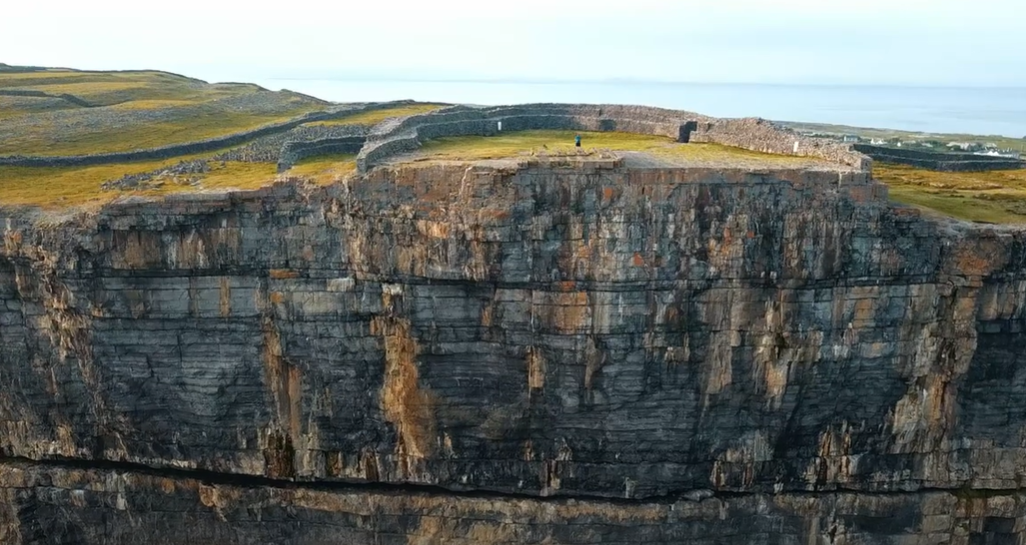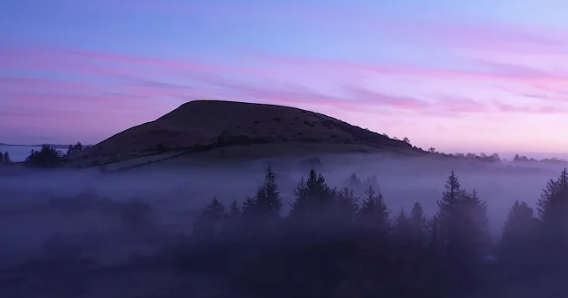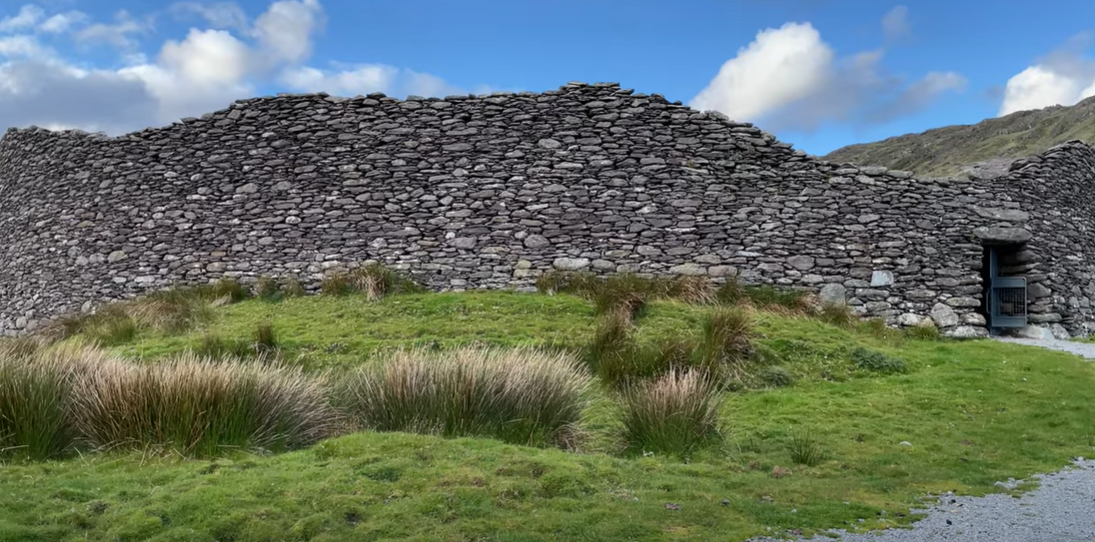Fairy forts in Ireland, known locally as raths or lios, are ancient, mystical sites scattered across the lush landscapes. These circular earthworks date back to the Iron Age and are steeped in folklore, often linked to the Aos Sí, Ireland's supernatural race. Visitors seek them out for their historical significance and enchanting stories. The best time to visit these forts is during the late spring to early autumn when the weather is mild and the greenery is in full bloom. Always respect the superstitions surrounding these sites, such as not disturbing the stones, to avoid bad luck.
When I visited a fairy fort nestled in the rolling hills of County Clare, I felt an indescribable sense of wonder and serenity. The air was still, with a slight rustle of leaves that felt almost like whispers from another world. Standing among the ancient earthen mounds, I couldn't help but be captivated by the sense of history and magic all around me. The locals’ tales of mysterious happenings made the experience even more memorable, and I made sure to tread lightly and leave the site exactly as I found it, not daring to tempt fate.
What Makes a Structure a Fairy Fort in Ireland?
A structure is considered a fairy fort in Ireland if it is an ancient circular earthwork or ringfort, typically consisting of earthen or stone banks with a ditch surrounding the perimeter. These structures date back to the Iron Age and early medieval period and are often associated with folklore about the Aos Sí, or fairy people. Their defining features include the circular shape, raised embankments, and the presence of historical ruins or remnants of dwellings. They were originally used as farmsteads or defensive enclosures but have since taken on a mystical reputation in Irish culture.
List of Famous Fairy Forts in Ireland
The list of famous fairy forts in Ireland includes some of the most enchanting and storied sites steeped in local myth and historical significance. These ancient structure(s), including numerous fairy forts and medieval ring fort(s), dot the lush Irish landscape, serving as gateways to the otherworldly realms of folklore and fairy belief. Among these, the Grianan of Aileach in County Donegal, the Hill of Tara in County Meath, and the Dún Aonghasa on the Aran Islands stand out as iconic symbols of Ireland's Celtic past and rich Irish history. Further exploring the mystical allure, Knocknashee in County Sligo and Staigue Fort in County Kerry also offer visitors a glimpse into the magical and the mysterious, often associated with Irish fairies. These circular structures, sometimes referred to as fairy rings, are surrounded by breathtaking natural beauty. Each fort holds its own unique story, ready to be discovered and admired.
Grianan of Aileach, County Donegal
The list of famous fairy forts in Ireland includes the Grianan of Aileach in County Donegal. This ancient hillfort, perched on Greenan Mountain, commands sweeping views of the surrounding landscapes. Historically, it served as the royal seat of the Kingdom of Aileach and holds deep cultural and mythical significance.
-
Grianan of Aileach is believed to date back to the 1st millennium BC.
-
Restoration efforts in the 19th century helped preserve its distinctive stone ramparts.
Legends say the fort is a portal to the Otherworld, home of the Tuatha Dé Danann, the mystical pre-Celtic race of Ireland. Visitors often experience a sense of enchantment and timeless connection to Ireland’s ancient past. The best time to visit is during the early summer when the weather is mild and the days are longest.
Hill of Tara, County Meath
The Hill of Tara in County Meath is one of Ireland's most storied fairy forts. Located near the River Boyne, this ancient site holds a wealth of mythological and archaeological significance.
-
Tara served as the seat of the High Kings of Ireland, making it a central monument in Irish lore.
-
The site encompasses several ancient earthworks and structures, believed to be the dwellings of the Aos Sí, or "people of the mounds", who are central to fairy folklore in Ireland.
-
The Lia Fáil (Stone of Destiny) is positioned here, where it was said to roar when touched by the rightful king of Tara.
Visitors often experience a strong sense of history and mystery, contributing to the area's magical reputation. The best time to visit the Hill of Tara is during the summer months when the weather is mild and the site's features are most visible.
The Dún Aonghasa, Aran Islands

The Dún Aonghasa on the Aran Islands ranks prominently among the most famous fairy forts in Ireland. This prehistoric hill fort stands at the edge of a high cliff, offering breathtaking views over the Atlantic Ocean. Legends suggest it was a place of great spiritual importance and possibly a gateway to other worlds in ancient times.
Key features of Dún Aonghasa include:
-
Its semi-circular shape, aligned with the shape of the cliff.
-
Massive defensive walls, some of which remain intact today.
-
A series of concentric stone walls and defensive terraces.
Visitors often feel a mystical presence, perhaps linked to the fort's storied past involving fairies and ancient ceremonies. The best time to visit is during the late spring and summer when the weather is mild and the ferry services to the Aran Islands are most frequent.
Knocknashee, County Sligo

The Dún Aonghasa on the Aran Islands ranks prominently among the most famous fairy forts in Ireland. This prehistoric hill fort stands at the edge of a high cliff, offering breathtaking views over the Atlantic Ocean. Legends suggest it was a place of great spiritual importance and possibly a gateway to other worlds in ancient times.
Key features of Dún Aonghasa include:
-
Its semi-circular shape, aligned with the shape of the cliff.
-
Massive defensive walls, some of which remain intact today.
-
A series of concentric stone walls and defensive terraces.
Visitors often feel a mystical presence, perhaps linked to the fort's storied past involving fairies and ancient ceremonies. The best time to visit is during the late spring and summer when the weather is mild and the ferry services to the Aran Islands are most frequent.
Staigue Fort, County Kerry

Staigue Fort, located in County Kerry, is one of Ireland's most renowned fairy forts. This ancient stone ringfort stands as a testament to prehistoric engineering and mystical Irish lore. It is believed to have been constructed during the Iron Age, around 300 to 400 AD, without the use of mortar.
-
The fort is known for its massive circular wall, which is up to 5.5 meters high and 4 meters thick.
-
The structure is impressive not only for its size but also for its intricate series of X-shaped stairways hidden within the walls, hinting at sophisticated defensive strategies.
Local superstitions surround Staigue Fort, with legends suggesting it was built by a shadowy tribe of the fairy folk known as the "Tuatha Dé Danann." These stories often emphasize the fort's supposed magical properties and the bad luck that befalls those who disturb its stones.
The best time to visit Staigue Fort is during the dry months of May through September, when the weather is more favorable for hiking and exploring the rugged landscape. Visitors during these months can enjoy clearer views and a safer trek to the site.
Visiting Staigue Fort offers a glimpse into Ireland's rich Celtic past and an opportunity to immerse oneself in the enchanting world of fairy tales and ancient legends.
What Are the Superstitions Around Fairy Forts in Ireland?
The superstitions around fairy forts in Ireland revolve around the belief that these ancient sites are protected by the Aos Sí, or fairy people, and that disturbing them brings misfortune. These legends caution against interfering with the forts in any way, such as removing stones, cutting trees, or attempting to build on the land, as it is believed to anger the fairies. Stories of bad luck, illness, or even death befalling those who disrespect the forts are common in Irish folklore, leading locals and visitors alike to treat these places with great reverence and caution.
-
It is believed that disturbing a fairy fort can bring bad luck, illness, or even death as a result of angering the spirits residing within.
-
Farmers traditionally avoid plowing or building on land where a fairy fort is located, fearing mysterious calamities.
-
Items should not be taken from a fairy fort, as it is considered theft from the fairies, which they may seek to recompense in unforeseen ways.
-
Night-time is particularly sacred at these sites; it is said that fairies are most active at dusk and that to see them during this time is both a blessing and a curse.
-
Respecting these sites by leaving them undisturbed during festivals such as Samhain (Halloween) is common, as the veil between worlds is thinnest then, and fairy activity is at its peak.
Despite modernization, many locals continue to preserve these ancient sites, adhering to the age-old superstitions. Visiting a fairy fort is seen as a step back into a mystical past and is approached with reverence and caution. For those planning to visit, it is advised to do so respectfully, maintaining the sanctity of these culturally and historically significant sites. The best time to visit is typically during the day, especially in the early morning when the landscape is most serene and the risk of disturbing the fairies is at its lowest.
Best Times to Visit Fairy Forts in Ireland
The best times to visit fairy forts in Ireland are during the late spring and early autumn months. May and September offer mild weather and fewer crowds, enhancing the mystical experience of these ancient sites. Early morning visits are ideal for catching the first light, which folklore says is when the fairies are most active. Dusk is another magical time to explore, as the setting sun casts long shadows and enriches the folklore ambiance. Always check local weather conditions before planning your visit, as Irish weather can be unpredictable.
Tips for Visiting Fairy Forts in Ireland
When planning a visit to fairy forts in Ireland, it's important to approach these historical and mystical sites with respect and awareness. Fairy forts, also known as ringforts or raths, are ancient earthworks and stone structures traditionally believed to be the dwellings of supernatural beings in Irish folklore. They are scattered across the Irish landscape, often hidden in plain sight as grassy mounds or encircled by trees.
Here are some practical tips for visiting fairy forts:
-
Respect the Site: Do not disturb the structure or remove stones. These are historical sites protected by law and local custom.
-
Visit at Dusk or Dawn: These times are not only ideal for experiencing the mystical atmosphere of the forts but also for avoiding the larger daytime crowds.
-
Follow Local Guidance: Heed any advice or rules posted near the sites, and consider taking a guided tour to gain deeper insight into their folklore.
-
Dress Appropriately: Wear suitable outdoor clothing and sturdy footwear, as the terrain around fairy forts can be uneven and sometimes muddy.
-
No Littering: Preserve the natural beauty of these sites by taking all trash with you.
-
Photography: Feel free to take photographs, but avoid using flash which can be disruptive in these serene settings.
Visiting fairy forts offers a unique opportunity to connect with Ireland's ancient past and its rich tapestry of folklore. Each fort has its own story, woven into the fabric of local culture and landscape. Whether you are a history buff, a lover of myths, or simply looking for a serene escape into nature, these sites provide a deeply enriching experience. Remember, the key to a rewarding visit is mindfulness of the cultural significance and natural beauty of these age-old structures.
How Fairy Forts Play a Crucial Role in Ireland's Tourism?
Fairy forts play a crucial role in Ireland's tourism by attracting visitors with their rich mythical heritage and natural beauty. These ancient, mystical sites, also known as ring forts or raths, are steeped in folklore and considered gateways to the otherworld of fairies and spirits. Tourists flock to these locations to experience the enchanting atmosphere and explore the remnants of Ireland's early medieval past.
The presence of fairy forts, including the enchanting fairy ring fort, across the Irish landscape enhances the cultural depth and picturesque charm of rural Ireland, making them a key feature in travel itineraries. Guides often recount tales of the supposed supernatural occurrences and the bad luck that befalls those who disturb these sacred sites, adding a thrilling edge to visits. During peak travel seasons, the allure of these forts, particularly fairy ring forts, contributes significantly to the local economy, supporting nearby businesses and services.
FAQs on Fairy Forts in Ireland
1. What are fairy forts?
Fairy forts, also known as ringforts or raths, are ancient circular earthen structures believed to be dwelling places of the fairies and spirits in Irish folklore. They are located throughout Ireland, often in picturesque rural settings.
2. Why are fairy forts considered magical?
Fairy forts are considered magical because of their historical connection to Irish mythology and folklore. These sites are often associated with tales of supernatural events and fairy encounters.
3. When is the best time to visit fairy forts in Ireland?
The best time to visit fairy forts in Ireland is during the late spring and summer months when the weather is milder and the days are longer, providing better conditions for exploring these outdoor historical sites.
4. What superstitions are associated with fairy forts?
Superstitions around fairy forts include beliefs that disturbing these sites can bring bad luck or misfortune, as they are considered to be protected by fairies. Many locals avoid interfering with them to maintain peace with the fairy folk.
5. Are there guided tours available for visiting fairy forts?
Yes, guided tours are available for visiting fairy forts. These tours often provide insightful narratives about the history, archaeology, and folklore associated with the sites.
6. How should visitors behave at fairy forts?
Visitors should show respect and caution at fairy forts, refraining from disturbing the sites in any way due to their cultural significance and associated superstitions. It is advisable to follow paths, take photos without causing damage, and leave the site as it was found.
